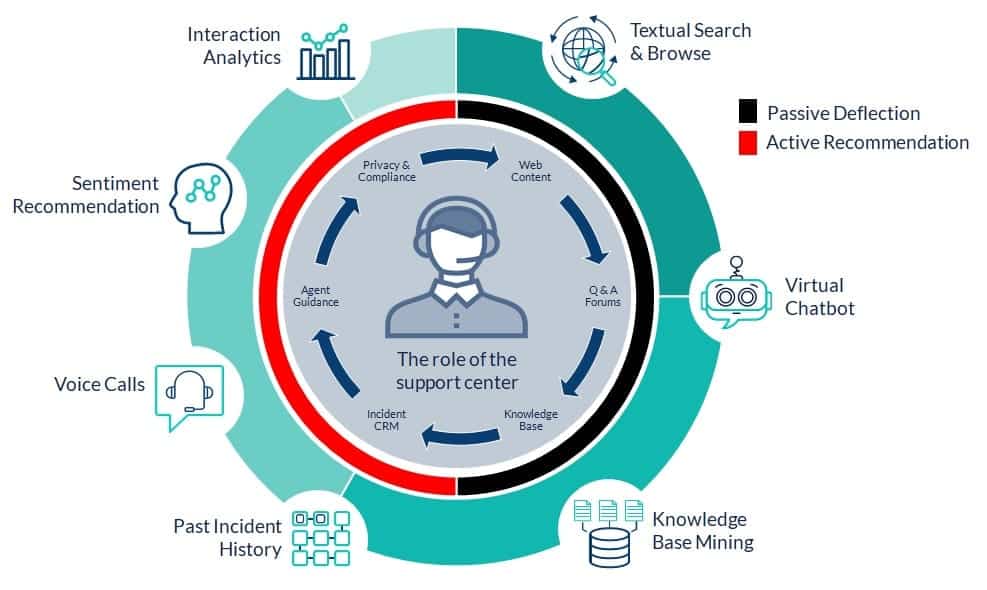The Crisis in the Call Center
Learn how organizations can find ways to incorporate digital solutions into the call center to improve customer and consumer experience.

It was only recently after waiting 45 minutes to speak to a well-known electronic retailer about a purchase issue, that it occurred to me that traditional call centers are a little stressed right now.
While on hold I went online and tried to work with a chatbot or virtual assistant to see if that was quicker. After five minutes of underwhelming Q&A, the sort that would frustrate a 3-year-old trying to communicate, I gave up and started a search for answers through their site search.
The organization’s knowledgebase was clearly hidden, as every time I got close to an answer the recommendation was to call “customer service” for which I was still on hold.
Finally, I went online to related forums, only to find my frustration exacerbated with many other equally minded and intelligent individuals having the same frustration and deciding to post it for prosperity in the hope the organization would notice and do something about it.
In the end, after nearly 60 minutes of waiting I gave up, only to have to try again on another day.
Quantifying the Pain

Taking a step back from the “in-the-moment” experience I had just garnered, I started wondering about what pressure the call centers were really facing today. Gartner put it best in its research note of June 30, 2020, by highlighting that traffic into customer support centers was growing anywhere from 4% to 1000%+.
At the same time, employees have begun working from home where they can no longer leverage their social networks in person and are quickly hacking together home offices and technology solutions.
Gartner also comments that consumers in crisis fall back on familiar technologies to get answers, using channels such as voice, SMS and search. Unfortunately most organizations have not yet deployed AI-powered solutions.
In short, it was obvious. The traditional call center is in crisis, particularly for those organizations that have limited self-service capabilities.
Separating the Issues
“Crisis” is a very loaded word in this context, so let us take a moment to break this down and highlight the issues that are contributing to organizational strain in delivering customer service:
- The operational efficiency of the call center itself when your workforce is remote or understaffed
- The ability to intelligently resolve questions from consumers and customers before they pick up the phone
- Access to knowledge that would benefit consumers and customers but is buried in legacy systems and solutions that only permit access behind the firewall
- Reliable internal and external search so that individuals can find information using natural language vs. guessing the keywords and phrases that might give them an answer
- Understand consumers and customers better through personalized approaches.
These are just a few, but at the same time, they are the ones that are most immediate to address.
Another way of looking at this is to think holistically about the whole passive and active approaches to addressing customer needs and what we should expect from the call center.

The wheel diagram is a way of looking at the call center in digital 360. The inner segment defines the key functions that a call center provides. The outer segments are the technologies needed to support the functions. Finally, the black and red segments focus on passive deflection strategies that provide self-service to consumers and the active recommendations whatever the channel of communication.
The trick with this model is to connect the function or need to the technology solution and contextualize it to the active or passive approach to managing the customer.
Resistance Is Futile – Use the Cloud
A common reaction to having to rapidly address organizational pain points or issues, whether part of a digital transformation strategy or otherwise, is to blame infrastructure or organization legacy for an inability to act. Today, that is not a viable excuse.
Nearly all the tech in the previous model can be run in a cloud workload that can be spun up in an instant. Nearly all the solutions in question can operate securely and dynamically from a cloud workload that integrates with legacy systems and solutions to provide virtual and seamless experiences for internal and external consumers of information.
Call to Action

So, this is all good information, but what next? The call to action is simple – don’t bury your head in the sand. This situation isn’t going to improve without digital transformation.
All organizations whether driven by operational efficiency or customer retention need to find ways to incorporate digital solutions into the call center to improve the user experience.
The key is to do this on a personalized level by using big data, AI and intelligent tech to offer contextual knowledge and information to individuals vs. a blanket approach to information dissemination. Two good examples are chatbots for call deflection and knowledge search for agent assistance.
- Dumb chatbots cause more consumer frustration from static answer models linked to best guess questions. Intelligent, AI-powered virtual assistants, on the other hand, can parse language, determine personal requirements, and offer specific solutions and/or direction to subject matter expertise.
- For agents in the call center, virtual, seamless access to personalized knowledge is paramount. This requires that all customer- and product-related information is brought together in a single, machine learning-powered search that contextualizes to the individual on a call. The ideal scenario is one where speech is interpreted real time to offer live recommendation. The latter alleviates further call follow up and/or and faster incident resolution.
A Word of Caution
If you do decide to go with the status quo, consider the downside to inaction when much of the world is transitioning to virtual online. Given how the global pandemic has stressed businesses today, the lack of urgent change in the call center can cause real problems for organizations.
Consumer patience and loyalty is fickle. I have certainly stopped buying goods from the retailer I mentioned at the start!
The original version of this article can be found on Onix.
LEARN MORE
Contact us today to learn how Lucidworks can help your team create powerful search and discovery applications for your customers and employees.